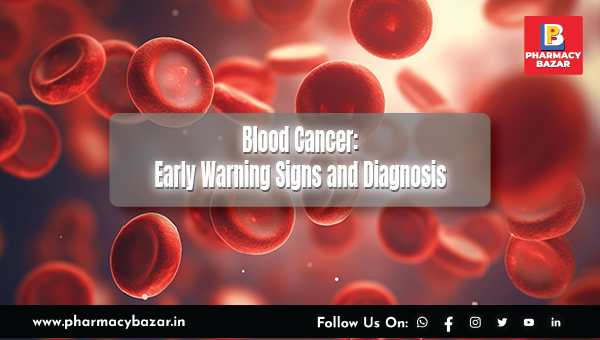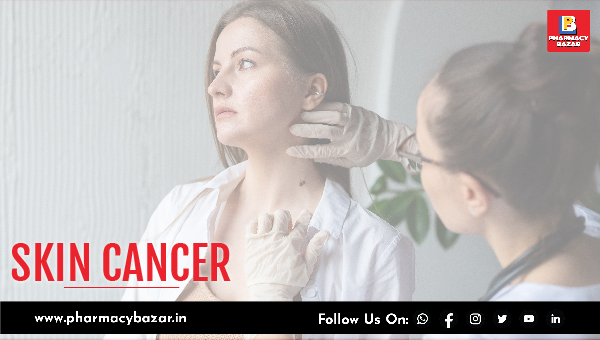Summer & Skin Cancer
May 02, 2023
Skin cancer is a significant health concern during the summer months due to increased exposure to ultraviolet (UV) radiation from the sun. The most common types of skin cancer are basal cell carcinoma, squamous cell carcinoma, and melanoma.
During the summer months, the Earth's tilt positions the Northern Hemisphere (assuming it is summer in the Northern Hemisphere) closer to the sun, causing the sun's rays to be more direct and intense. This increased intensity results in higher levels of ultraviolet (UV) radiation reaching the Earth's surface, which can have significant health implications.
Ultraviolet radiation is a type of electromagnetic radiation emitted by the sun. It is categorized into three main types:
UVA (320-400 nm): UVA radiation has the longest wavelength and UVB (280-320 nm): UVB radiation has a shorter wavelength, but they are much more biologically active that can penetrate deeper into the skin, causing skin aging and contributing to the development of skin cancer. UVC (100-280 nm): UVC radiation has the shortest wavelength and is the most dangerous type of UV radiation. Fortunately, it is almost completely absorbed by the Earth's atmosphere and does not reach the surface.
During the summer, the increased ultraviolet radiation, especially UVB rays, poses a higher risk of skin damage, sunburn, and skin cancer. To protect yourself from harmful UV radiation in the summer, it is essential to practice sun safety measures such as seeking shade, wearing protective clothing, using sunscreen, and wearing sunglasses with UV protection. Here are some essential points about skin cancer and summer.
UV radiation: Ultraviolet (UV) radiation from the sun is the primary cause of skin cancer. During summer, the sun's rays are more direct and intense, increasing the risk of skin damage and cancer.
Sunburns: Sunburns are a sign of skin damage and increase the risk of developing skin cancer, especially if they are severe or occur frequently.
Tanning: Tanning, whether outdoors or in tanning beds, exposes the skin to harmful UV radiation, which can lead to skin cancer.
Early detection: Regular self-examinations for changes in moles, freckles, and other skin marks can help with the early detection of skin cancer. Look for the ABCDEs of melanoma: Asymmetry, Border irregularity, Color variability, Diameter larger than 6mm (the size of a pencil eraser), and Evolving appearance.
Symptoms of Skin Cancer: Skin cancer can manifest in various ways, depending on the type of cancer. The most common types of skin cancer are basal cell carcinoma, squamous cell carcinoma, and melanoma. Here are the typical symptoms associated with each type:
1. Basal cell carcinoma:
-
Usually appears on sun-exposed areas, such as the face, neck, or ears
-
May present as a pearly or waxy bump or a flat, flesh-colored, or brown scar-like lesion
2. Squamous cell carcinoma:
-
Typically develops on sun-exposed areas, such as the face, ears, neck, hands, or arms
-
May appear as a firm, red nodule or a flat lesion with a scaly, crusted surface
3. Melanoma:
-
Can develop anywhere on the skin, even in areas not exposed to the sun
-
Often manifests as a change in an existing mole or as a new, unusual-looking growth
-
To identify melanomas, remember the ABCDE rule:
-
Asymmetry: The shape of one half of the mole doesn't match the other half
-
Border: The edges of the mole are irregular, scalloped, or poorly defined
-
Color: The mole has varying colors, such as shades of tan, brown, black, white, red, or blue
-
Diameter: The mole is larger than 6 millimeters (about the size of a pencil eraser), although melanomas can be smaller
-
Evolving: The mole is changing in size, shape, or color
It's important to note that not all skin cancers fit these descriptions, and other skin conditions can also resemble skin cancer. If you notice any changes in your skin, such as a new growth, a sore that doesn't heal, or a change in an existing mole, it's essential to consult a healthcare professional for a proper evaluation and diagnosis. Early detection and treatment are crucial for the best possible outcome in skin cancer cases.
Prevention: Protecting your skin from the sun is essential for preventing skin cancer. Key prevention measures include:
Seeking shade, especially during peak UV hours (10 a.m. to 4 p.m.)
Wearing protective clothing, such as long-sleeved shirts, pants, and wide-brimmed hats.
Applying a broad-spectrum sunscreen with an SPF of 30 or higher, reapplying every two hours and after swimming or sweating.
Wearing sunglasses with UV protection to shield your eyes and the surrounding skin
Avoiding tanning beds
Vitamin D: While sunlight exposure helps the body produce vitamin D, it's important to balance this need with sun protection. You can also obtain vitamin D from certain foods (like fatty fish and fortified dairy products) and supplements.
Available Treatment & Therapy: Treatment options for skin cancer depend on the type, stage, location, and extent of the cancer, as well as the patient's overall health and preferences. Here are some common treatment options for skin cancer:
-
Surgery:
-
Excision: The cancerous lesion and a small amount of surrounding healthy tissue are removed.
-
Mohs surgery: A specialized surgical technique that involves removing the cancer layer by layer, examining each layer under a microscope until no cancerous cells are detected. This approach is often used for larger or recurring skin cancers or those in cosmetically sensitive areas.
-
Curettage and electrodesiccation: The cancer is scraped away with a curette, and the area is treated with an electric needle to destroy any remaining cancer cells and control bleeding.
-
Cryosurgery: The cancerous tissue is frozen with liquid nitrogen and destroyed.
-
Radiation therapy: High-energy rays, such as X-rays, are used to kill cancer cells. Radiation therapy may be used when surgery is not an option or in combination with surgery to ensure the complete removal of cancer cells.
-
Topical treatments: Creams or gels containing anti-cancer agents may be applied directly to the skin to treat some early-stage basal cell and squamous cell carcinomas. Examples include imiquimod and 5-fluorouracil.
-
Photodynamic therapy (PDT): This treatment involves applying a photosensitizing agent to the skin, followed by exposure to a specific wavelength of light. The activated photosensitizer destroys cancer cells.
-
Laser therapy: High-intensity light is used to destroy cancer cells or vaporize the top layers of skin containing cancerous cells.
-
Targeted therapy: Drugs that target specific molecular changes in cancer cells may be used for advanced or metastatic melanomas. Examples include BRAF inhibitors (vemurafenib, dabrafenib) and MEK inhibitors (trametinib, cobimetinib).
-
Immunotherapy: This approach uses medications to stimulate the patient's immune system to fight cancer. Examples include immune checkpoint inhibitors (ipilimumab, nivolumab, pembrolizumab) and oncolytic virus therapy (talimogene laherparepvec).
-
Chemotherapy: The use of drugs to kill cancer cells may be an option for advanced or metastatic skin cancers. Chemotherapy can be administered systemically (through the bloodstream) or locally (directly into the tumor).
The choice of treatment depends on several factors, and the patient and healthcare team should discuss the available options and their potential risks and benefits to make an informed decision. Early detection and treatment of skin cancer significantly increases the chances of successful outcomes.
DISCLAIMER: This article is the property of Pharmacy Bazar and is protected by copyright laws. The information provided in this article is for educational and informational purposes only and is not intended to be a substitute for professional medical advice, diagnosis, or treatment. Always seek the advice of a qualified healthcare provider with any questions you may have regarding a medical condition. Never disregard professional medical advice or delay in seeking it because of something you have read in this article. The author and publisher of this article do not endorse any specific treatments, procedures, or products mentioned in this article.
Recent Post

Blood Cancer: Early Warning Signs and Diagnosis

Understanding Gallstones: Causes, Symptoms, and Treatment Options

Navigating Diabetes Medications: Benefits and Side Effects

Revolutionizing Cancer Treatment: How Unleashing T Cells' Energy Could Transform Immunotherapy

The Power of Lower Back Stretches: Benefits and Best Yoga Asanas for a Healthy Spine

8 Health Conditions That Could Be Due to Magnesium Deficiency

Unlocking Brain Health: How Lifestyle Choices Impact Cognitive Functions

When Speech Takes a Surprising Turn: Unraveling Foreign Accent Syndrome

The Optimal Time to Take Your Vitamin D Supplement: Insights and Best Practices

Beyond Diabetes: Unveiling the Hidden Health Risks of Insulin Resistance

